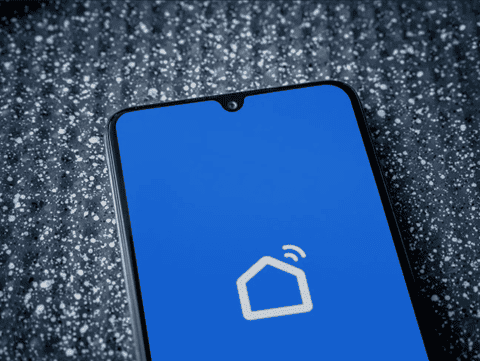Smart Life devices can go offline because of network, router problems, and issues on your Smart Life device’s end. To fix this, try the following solutions:
- Refresh your Smart Life device’s network connection
- Install a Wi-Fi extender to your router
- Reboot your router
- Update your router’s firmware
- Update your Smart Life app and device firmware
- Contact Smart Life support
Here are more details on the causes of this issue and straightforward solutions to troubleshooting your offline smart life devices
Fixing Offline Smart Life Devices: An In-Depth Guide

The most common reason for Smart Life devices going offline is router overload. Because Smart Life devices don’t come with a dedicated hub, Smart Life devices independently connect to your router’s Wi-Fi network.
This means that every time your Smart Life devices need to log or renew their IP to maintain connection, they can often flood your router with requests. This can be fixed by installing a Wi-Fi extender and connecting your Smart Life devices to it to it.
Another common cause is faulty device network configuration. Sometimes a bug or an update will change your Smart Life device’s network configuration, which will require you to refresh this configuration on your Smart Life device.
However, there are many other potential reasons why your Smart Life devices go offline. When troubleshooting this issue, it’s best to identify the most likely causes when inspecting your router, network, and Smart Life device.
Troubleshooting Router Issues
1. Your router is overloaded
If you have more than three Smart Life devices, this is a very likely cause.
Too many Smart Life devices connected to your router can overload the router. As Smart Life devices don’t connect through a hub, your router must directly process each of their independent connections.
Because of this inefficient way of managing connections, your Smart Life devices eventually make too many network requests to stay connected to your router that it can’t process them fast enough. This causes the devices to go offline.
Other factors can also overload your router, compounding Smart Life devices’ unique issue. These factors can include:
- Outdated router firmware
- Too many connected home devices
- Excess of downloads and uploads, such as during peak Internet usage times in your household
How to Fix:
- Install a Wi-Fi extender to your router and connect your Smart Life devices to it. This effectively serves as a hub for your Smart Life devices, allowing their connections to be processed more efficiently.
- Update your router’s firmware. Some routers have outdated firmware that’s incompatible with modern smart devices. A simple update according to your router manufacturer’s website can fix any bugs and performance issues.
- Reduce the amount of Smart Life devices connected to your Wi-Fi network. Check for any device that you don’t use and disconnect them from your Wi-Fi network. This should ease the load on your router.
2. Your router’s bandwidth is too low
Even if your router isn’t maintaining too many connections, it may still be struggling to provide enough bandwidth to keep Smart Life devices connected to your network. This can be because:
- Your Internet plan is too slow.
- Your Smart Life devices are too far from your router.
- There are many active devices in the network that are downloading and uploading too much data.
How to Fix:
- Upgrade your Internet plan. Although expensive, it may be time to consider this especially if you plan on expanding your use of smart home products like Smart Life.
- If your Smart Life devices are too far from your router, install a Wi-Fi extender and connect your Smart Life devices to it. This will increase the range of your Wi-Fi, fixing any issues with Smart Life devices being too far.
- If the range isn’t the issue, change your Wi-Fi band to 5GHz. If your router supports it, you may want to enable 5GHz Wi-fi and connect your Smart Life devices to your 5GHz network.
5GHz Wi-Fi provides better bandwidth at the cost of range. If you live in a small area, this can help deal with any bandwidth issues for your Smart Life devices.
3. There’s a bug in the router’s software
Bugs in your router’s software can interfere with your Smart Life devices’ connection and render them offline. These bugs can be caused by malware acquired from malicious websites and faulty code.
How to Fix:
- Reboot your router. Simply restarting the router can help clear up temporary issues caused by network bugs.
- Factory reset your router. Factory resetting your router can flush away any bugs in its software. Follow your router’s manual on how to factory reset it and be prepared to reconfigure and reconnect your connected devices.
- Update your router firmware. Check the router manufacturer’s website for the latest firmware version and install it. Many bugs are fixed in firmware updates. Always back up your settings before updating. (Refer to the video in the previous solution above for more detailed instructions.)
- Call your ISP. For bugs that persist after troubleshooting your router, call your Internet Service Provider to have them diagnose issues with the network and modem/ONT firmware or connections.
Troubleshooting Network Issues
1. There’s too much wireless interference
Nearby devices like microwaves, Bluetooth devices, or even your neighbors' Wi-Fi can cause signal interference which can disrupt the wireless connectivity of your Smart Life devices.
If you notice that your Smart Life devices go offline when certain devices turn on, then this may be the likely cause.
How to Fix:
- Disconnect or turn off the devices causing interference. If you have Bluetooth devices that aren’t in use, turn them off.
- Relocate your Smart Life devices. If your Smart Life devices are in an area where signal-interfering devices are regularly used, consider moving them away from these areas and closer to your router.
- Relocating your router. Walls and other solid obstacles between your router and Smart Life device can cause heavy interference. Moving your router somewhere with fewer obstructions can improve your signal quality.
2. There’s been a network disruption
Temporary Internet or network outages caused by weather, technical failures, or bugs can knock Smart Life devices offline.
How to Fix:
- Refresh your Smart Life device’s connections. If the cause of the disruption is temporary, such as bad weather, then simply wait and check if your Smart Life devices remain offline.
If they continue to be offline even after a disruption to your Wi-Fi network, check your Smart Life device’s network configurations and refresh their connection to your Wi-Fi network.
3. Your network’s security settings tripped
Network firewalls, parental controls, or security settings that are too restrictive can block Smart Life devices from accessing your Wi-Fi network.
This can often happen if you’re installing new devices or have updated your Wi-Fi network with new changes.
How to Fix:
- Whitelist your Smart Life devices in your network security settings. The specific steps to do this will depend on your router’s model and ISP. Usually, you’ll simply need to access your router’s app or portal and whitelist your device once it tries to connect.
4. Your network’s configuration has changed
Changes to the network's settings like the Wi-Fi password or router IP address can cause Smart Life devices to go offline if the device isn't also updated with the new settings.
These changes can be caused by a network administration modifying the settings, the router/modem being replaced, or the router experiencing a factory reset.
How to Fix:
- Sync devices after any network configuration changes. Simply reconnect your Smart Life devices to your Wi-Fi network. You may need to enter your Wi-Fi password again and set your Smart Life devices to remember your Wi-Fi network.
Troubleshooting Device Issues
1. The Smart Life device is off
If your Smart Life device is powered off or unplugged, it will appear offline in the app since it has no connectivity. Smart plugs or bulbs may appear offline due to power outages, tripped breakers, faulty outlets, loose plugs, or wiring issues.
How to Fix:
- Check the device's power connections. Make sure the device is securely plugged in and the outlet is functioning. Try an alternate outlet to rule out wiring problems.
- Inspect the device and wiring. Damaged power cords, faulty internal wiring, and corrosion can cause connection issues. Check cords and connections thoroughly.
2. The Smart Life device’s network settings aren’t configured properly
If the wrong Wi-Fi network, password, or other network settings are configured on the Smart Life device, it will be unable to connect. Double-check if the device is connected to the correct network and has the current password.
How to Fix:
- Reconfigure the device's Wi-Fi settings. In the Smart Life app, go to the device settings, choose the correct network, and enter the current password.
- Check if the network password changed. If your Wi-Fi password recently changed, update it in the device and app settings to sync to the new credentials.
- See if the device switched networks. The device may have automatically connected to a different nearby network. Reconfigure it to use your home network.
- Forget the network and re-add it. For connectivity issues, forget the Wi-Fi network on the device then search and re-add your network.
3. Smart Life may be blocked by your phone or tablet
Your Smart Life devices may appear offline because your Smart Life app can’t coordinate with them properly because of restrictions on your phone or tablet.
How to Fix:
- Grant the Smart Life app permissions. The TheSmart Life app will need access to your network and location to function properly. You can easily grant this by going to your phone’s settings and navigating to your app permissions.
- Turn off Airplane or Low Battery mode. Your phone or tablet may have altered Internet connection or app functionality because it’s a special mode. Switch your mobile device back to normal and see if the issue persists on the Smart Life app.
4. Smart Life’s servers are offline or down for maintenance
Even if your network and devices are connected properly, Smart Life devices rely on Smart Life's back-end cloud servers to control the devices remotely. Any outage or disruption to these servers will knock devices offline.
These outages are usually temporary as Smart Life works to restore connectivity. However, any downtime for maintenance or technical issues can render devices unreachable until the servers come back online.
How to Fix:
- Be patient until the servers are back online. There is no fix on the user-end for server outages. Simply wait for Smart Life to complete maintenance and restore connections.
- Contact Smart Life support. If you believe the outage has persisted too long, contact Smart Life support to inquire about ongoing server issues.

